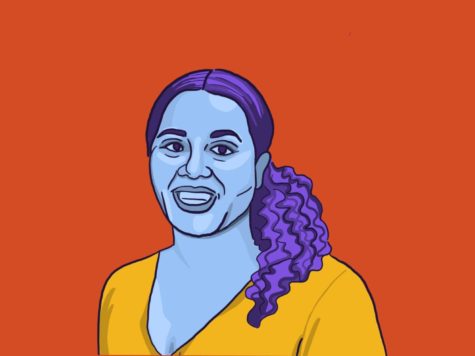Professor Guadalupe García uncovers hidden histories

Guadalupe García, an associate professor at Tulane University, grew up in Los Angeles. Movies and books depicted her home as a glamorous and star-studded paradise. But that was not the city García experienced.
She has always kept her hometown-paradox in mind, and it led her to an idea that forms the backbone of her work today: invisible history.
“That for me was always a big motivating factor,” García said. “To think about the history in urban spaces that we don’t see easily.”
García specializes in urban history and colonialism in the Caribbean. She also studies Latinx populations in the South and examines issues of race and immigration at a time when those issues are the focus of national and global reckonings.
For nearly 20 years, García has traveled to Havana, Cuba, stopped only by the COVID-19 pandemic. Garcia has spent several decades in the American South with stints in North Carolina and Florida before arriving at Tulane in 2010.
Already interested in Caribbean history and the urban environment, García became focused on the South during her PhD studies at the University of North Carolina Chapel Hill. There, she discovered another example of invisibility.
“I was just absolutely shocked at how many Latinos were in the U.S. South,” García said.
The discovery prompted new questions. Why had so many Latinos migrated to the South? When Black workers found jobs with higher wages, were Latinos filling their employment vacuum?
“I was just really surprised at some of the things that were going on … and I just wasn’t really reading about it,” García said.
Once García realized the issues she was questioning were relevant throughout the South, she began to conduct research around this, and uses this research as the basis for her teaching.
At Tulane, García teaches a class on the Latinx South. The South was a “context zone,” García said. It is deeply tied to historical precedents of race and immigration exclusion.
Along with her teaching, García is working on a book. It will piece together a picture of Havana outside the lens of colonialism.
“I want to see the city that enslaved people saw,” García said. “I want to see the city that didn’t make it into the documents because it wasn’t in the interest of people who were fleeing the Colonial administration to have it be public.”
García will examine the built environment and natural environments to achieve this vision. She previously wrote one book about colonial exclusion in Havana. She also edited a book on visual representations of resistance.
García works from New Orleans because “it’s the perfect place to grapple with these questions from.” It is located at a crossroads of historical, political and geographic exchanges that are contextually important to her work.
Her favorite parts of her job are teaching and research. Before the pandemic, she worked on a yearly schedule. When the Tulane semester ended, she could go to Cuba and work in a different form and place. When Cuba got “really hard and really hot,” she could come back and teach.
“It’s good timing,” García said.
Her biggest motivations are the stories of colonial cities and her students, she said. Today, García has the time she did not have five years ago to devote herself to these two priorities.
Through it all, her work comes back to the theme of invisibility in culture and history.
“We talked about imagined futures now and alternative futures,” García said. “But I think that there’s alternative pasts as a historian that I think are worth considering.”
Your donation will support the student journalists of Tulane University. Your contribution will allow us to purchase equipment and cover our annual website hosting costs.


